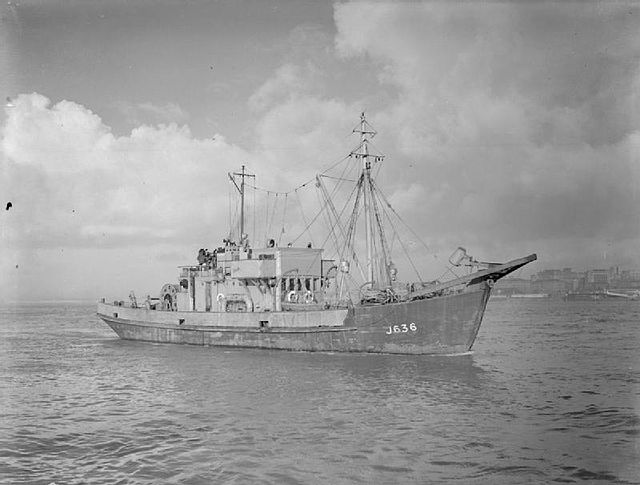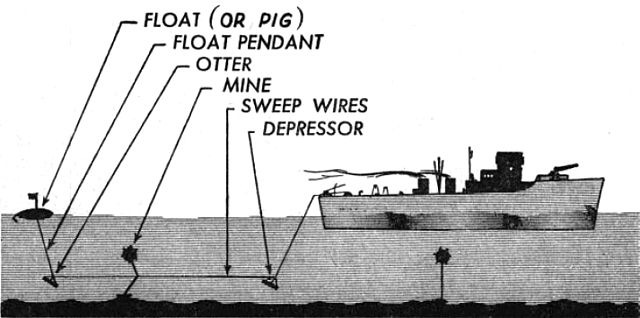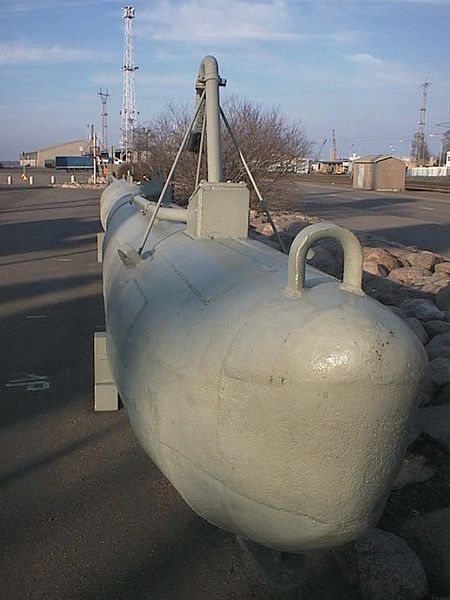Naval trawlers are vessels built along the lines of a fishing trawler but fitted out for naval purposes; they were widely used during the First and Second World Wars. Some—known in the Royal Navy as "Admiralty trawlers"— were purpose-built to naval specifications, others adapted from civilian use. Fishing trawlers were particularly suited for many naval requirements because they were robust vessels designed to work heavy trawls in all types of weather, and had large clear working decks. A minesweeper could be created by replacing the trawl with a mine sweep. Adding depth charge racks on the deck, ASDIC sonar below, and a 3-inch (76 mm) or 4-inch (102 mm) gun in the bow equipped the trawler for anti-submarine duties.
First World War naval trawler, HMT Swansea Castle
Second World War naval trawler, HMT Lancer
A naval trawler's gun crew mans a 12-pounder (76-mm) Mk V gun on the forecastle
HMT Northern Sky pitching and rolling at slow speed along her patrol lines. Operating off Iceland, this trawler made the last attack of the Second World War on a U-boat.
A minesweeper is a small warship designed to remove or detonate naval mines. Using various mechanisms intended to counter the threat posed by naval mines, minesweepers keep waterways clear for safe shipping.
Minesweeper J 636 underway in British coastal waters during World War II
A minesweeper cutting loose moored mines
Magnetic naval minesweeper as a monument in Kotka, Finland
Siegburg, a modern Ensdorf-class minesweeper of the German Navy








